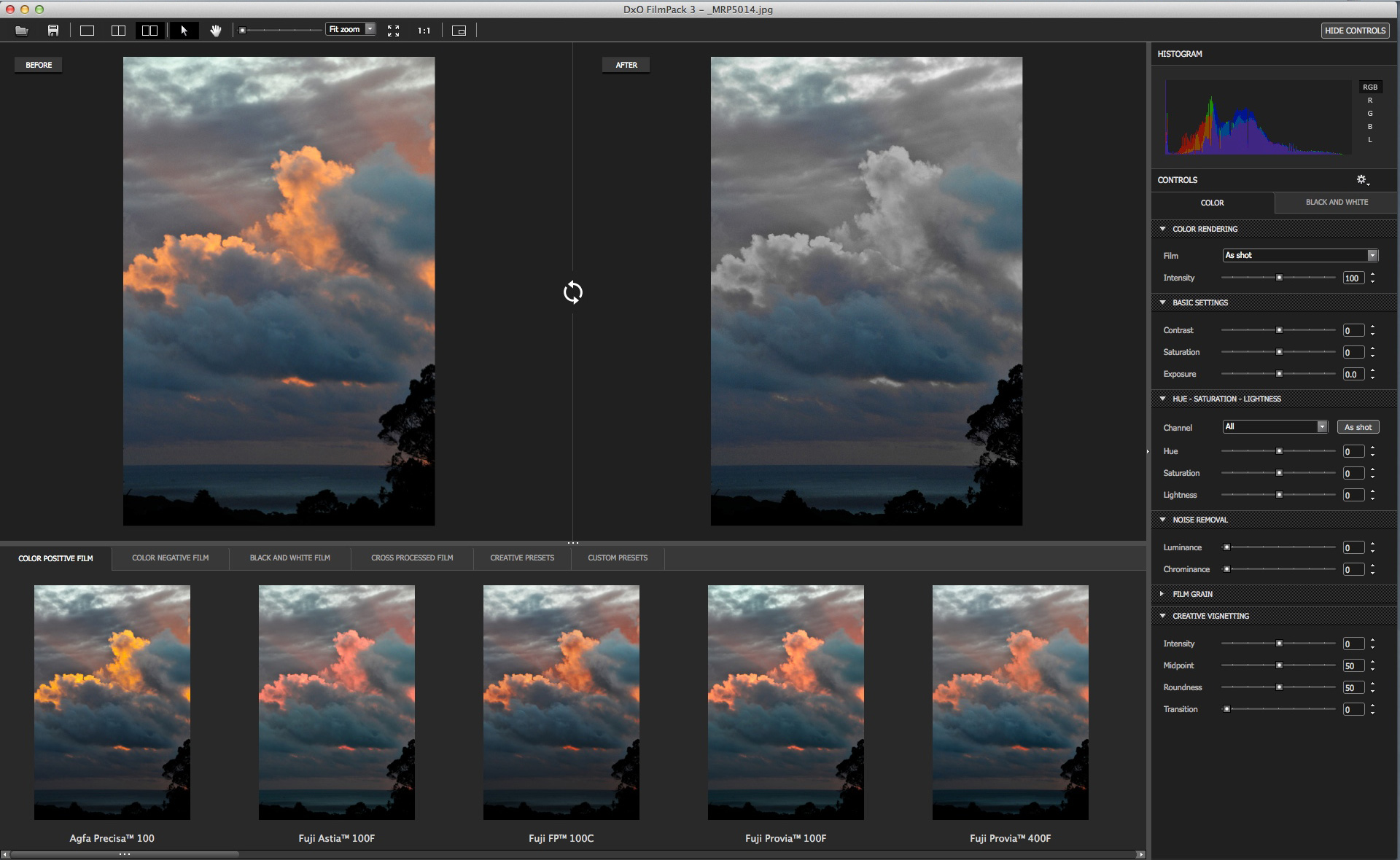
- NEW FEATURES IN DXO FILMPACK 5 REVIEW UPDATE
- NEW FEATURES IN DXO FILMPACK 5 REVIEW SOFTWARE
- NEW FEATURES IN DXO FILMPACK 5 REVIEW MAC
- NEW FEATURES IN DXO FILMPACK 5 REVIEW WINDOWS
Image adjustments are made in the Customize tab with presets and a browser on the left and palettes on the right. The revised OpticsPro 10 workspace features a darker gray background. There’s also no way to create a “lightbox” view of a folder (like Lightroom’s “Survey” mode) short of unlocking the image thumbnail browser from its docking position (which is fine if you have multiple monitors, but not ideal otherwise). Sorting is limited to filenames and while there are a number of filters available, there are no search tools. You can view your computer’s folder structure to choose image folders, but there is no way to transfer images into your computer from your camera or card reader. Should you decide to forgo the Lightroom integration, the standalone version of OpticsPro 10, like version 9, provides rudimentary organizational tools in its Organize workspace. Version 10.2 of OpticsPro now allows you to shoot tethered with Lightroom and have the files sent to OpticsPro for processing, and then back to Lightroom for output. Using both programs in this way, you sacrifice speed to gain a superior resulting image without sacrificing a non-destructive workflow. Each program is allowed to do what it does best. While the workflow is somewhat convoluted, it is seamless and easy to adjust to, blending OpticsPro’s projects and Lightroom’s collections features along the way.

The tools in OpticsPro 10 allow you to greatly enhance your images from the original (left) to the final frame (right). You now have the ability to use Lightroom to efficiently manage, sort and catalog images on the front end, and create web galleries, photo books, slideshows and print output on the back end, while handling RAW file processing and image correction in OpticsPro. DxO Labs has created a workflow that side-steps the inability of Lightroom to export a RAW-format file. You can adjust the automatic setting using the slider for greater or lesser correction.īut the strongest feature in OpticsPro 10 is its complete integration with Adobe Lightroom to create a non-destructive RAW file workflow. At its default setting, I found that it very effectively and subtly improved landscape photos with distant mountains.

ClearView corrects for the distance-related reduction in contrast and saturation due to atmospheric effects such as smog and haze. The latest version also adds a new ClearView subpanel in the Essential Tools palette. Version 9 saw the introduction of PRIME denoising, which gets a speed boost in the Elite version of OpticsPro 10.

Photos © Stan SholikĭxO OpticsPro, which began life as a simple RAW file conversion program, continues to evolve with the addition of powerful features. Landscape captures like this one (left) are dramatically improved (right) using the ClearView tool in OpticsPro 10, which enhances images by removing atmospheric fog and haze automatically.
NEW FEATURES IN DXO FILMPACK 5 REVIEW UPDATE
As with Adobe software, if you purchase a new camera you may need to update versions my Nikon D750 is not supported in version 9, but is supported in version 10, for example. Both editions are also much less expensive than before, with the Essential now available for $129 and the Elite for $199. With both editions compatible with the same set of camera models, the Elite edition includes features such as the new ClearView, PRIME denoising, an anti-moiré tool, customized palettes and a few others not found in the Essential edition. While the latest OpticsPro version 10 is still available in two versions-Essential (previously called Standard) and Elite. Users of OpticsPro will see the greatest benefits from these changes.
NEW FEATURES IN DXO FILMPACK 5 REVIEW SOFTWARE
These changes make the software even more beneficial to photographers while saving them a bit of money in the process. You can share your thoughts at the TDS Facebook page, where I'll post this story for discussion.Along with significant updates to DxO OpticsPro, DxO FilmPack and DxO ViewPoint, DxO Labs appears to have rethought its entire product mix and pricing structure.
NEW FEATURES IN DXO FILMPACK 5 REVIEW WINDOWS
You can view the Windows Release Notes here. Windows users also have a slew of updates. Once you've finished working on the picture in FilmPack, click the Save button in the upper left corner, and the edited image will be returned to Luminar as an adjustment layer.įrom that point, you can continue editing as you would with any project by applying blending modes, opacity adjustments, and of course, by tapping any of Luminar's Filters.ĭxO FilmPack 5 compatibility is just one of the new features in the Luminar 2018 V. Simply open an image in Luminar, go to Plugins > Other > DxO FilmPack 5, and the handoff will automatically happen.

Luminar users now can integrate all of those great film looks into their workflow.
NEW FEATURES IN DXO FILMPACK 5 REVIEW MAC
1.3 Mac is compatibility with DxO's excellent FilmPack 5.


 0 kommentar(er)
0 kommentar(er)
